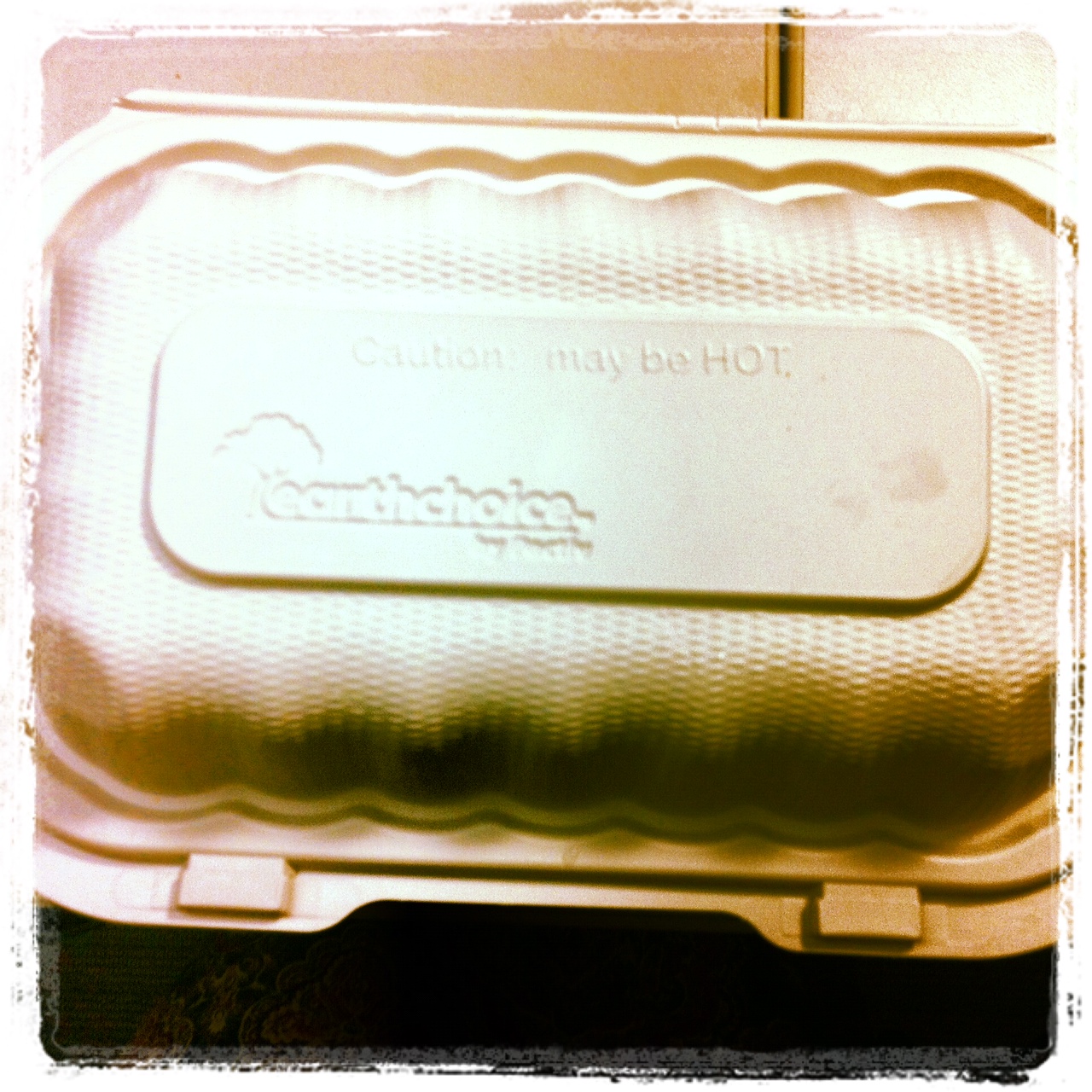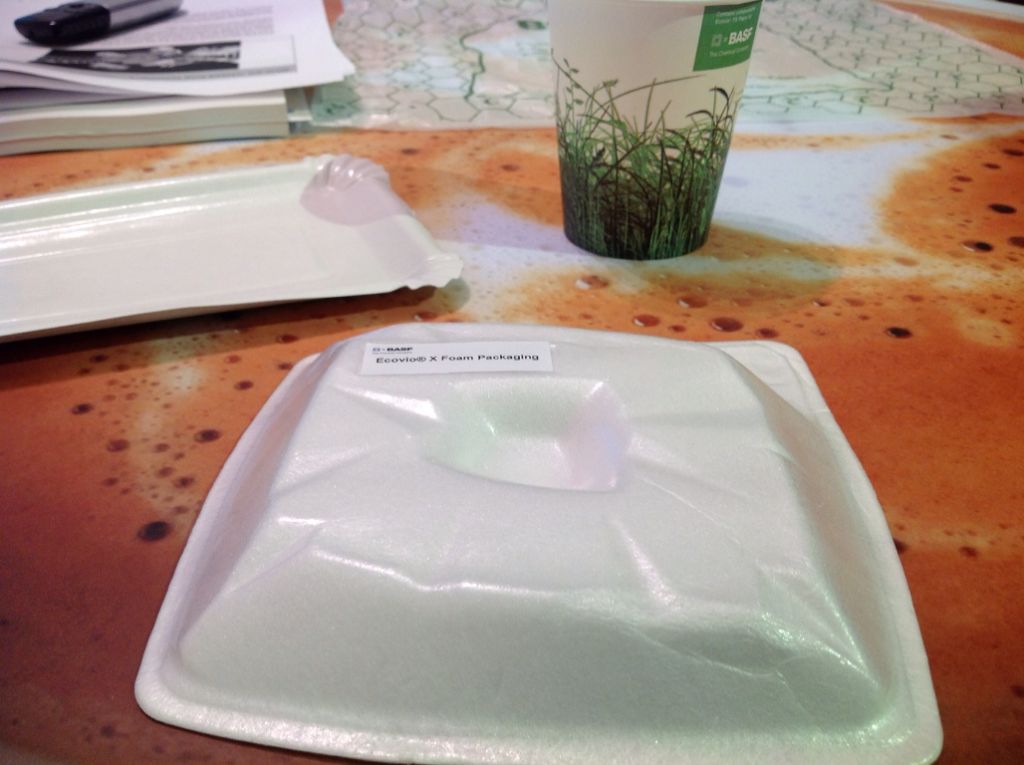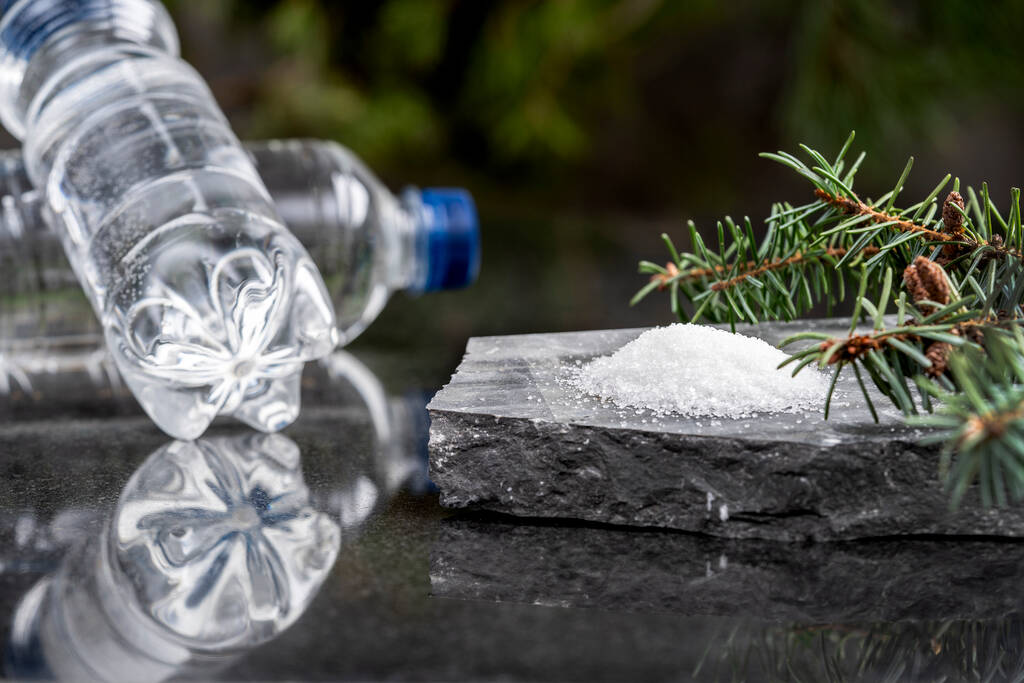I have this draft on bio-styrene for a couple of months now but has never been able to post it given that there are not many companies within the renewable chemicals industry developing plant-based styrene monomer alternatives.
However, on February 14 during his final State of the City address, the mayor of the city of New York Michael Bloomberg announced the city’s plans for a polystyrene foam ban in food packaging from stores and restaurants.
“One product that is virtually impossible to recycle and never bio-degrades is Styrofoam. But it’s not just terrible for the environment. It’s terrible for taxpayers. Styrofoam increases the cost of recycling by as much as $20 per ton, because it has to be removed.
Something that we know is environmentally destructive, that is
costing taxpayers money, and that is easily replaceable, is something we can do without. So with Speaker Quinn and the City Council, we will work to adopt a law banning Styrofoam food packaging from our stores and restaurants. And don’t worry: the doggie bag and the coffee cup will survive just fine.” – Mayor Bloomberg
By the way, just to be technically correct, Styrofoam is a polystyrene foam trademark under Dow Chemical and should not be applied to all polystyrene foam products unless it is manufactured by Dow.
New York city is not the only place that is considering or has implemented ban on polystyrene foam packaging. Several local jurisdictions in California including San Francisco and Los Angeles have implemented polystyrene bans and [or] have required food vendors to use recycled or compostable take-out packaging.
In fact, the California state assembly led by Senator Alan Lowenthal (D-Long Beach) has introduced bill SB 568 that requires the state of California to prohibit food vendors on and after January 1, 2016 from using polystyrene foam food container. Food vendors in school districts or local governments with eps recycling programs that meet or exceed a 60% recycling rate are exempt. The bill failed to pass the Assembly floor in August 31 last year.
In a statement about the New York City’s plans for a ban, the American Chemistry Council (ACC) noted recycling of polystyrene foam foodservice products as a better alternative.
“The technology exists to recycle polystyrene foam foodservice right now. California is making this work—22% of households there can recycle polystyrene foam foodservice cups, plates, bowls, clamshells and other containers at curbside (that’s more than eight million people). Similar programs don’t exist for other takeout foodservice.” – ACC
Compared to paper-based food packaging, polystyrene foam foodservice products are said to be 2x-5x less expensive, and use significantly less energy and water to manufacture than paper alternatives. ACC also noted that most landfill does not readily biodegrade paper-based food packaging.
Of course, seeing small plastic foam pellets swimming in the beach lingers more in a consumer’s mind than listening to scientific logic. Last year, McDonalds reportedly announced a pilot program that replaces polystyrene foam cups with paper-based products at 2,00 of its US stores, according to environmental group As You Sow. Dunkin Donuts said, in an August 2011 statement, that it is exploring alternative viable substitutes for its foam cups and polystyrene pink spoons (for its Baskin-Robbins’ ice cream stores).
HUNT FOR ALTERNATIVES
It is not easy to find alternatives for expandable polystyrene (EPS) foam products although there are definitely alternatives out there aside from wax coated paper-based products.
Canada-based EPS manufacturer StyroChem has developed its EVRgreen EPS resin that contains biodegradable additives EcoPure technology owned by New Mexico-based Bio-Tec Environmental. The additives reportedly enables microorganisms in biologically active landfills to breakdown the polystyrene at the molecular level.
Australia-based REMA said it is also promoting its biodegradable food packaging products called Biorene. Products in this line include foam cups, single-use plates and bowls, drink cups and lids.
Speaking of biodegradable plastic additives, I like this chart from another another biodegradable plastic additives developer Earth Nurture when comparing pros and cons of each technology. Of course you have to take this with a grain of salt (and do your own research).
The current issue of biodegradable plastic additives is if their biodegradability claims are substantiated. Here in the US, The SPI Bioplastics Council released a paper last month addressing the issue of degradable additives. The Council said the paper outlines the issues and questions concerning degradable additives in order to support consumers, retailers and the plastics industry in identifying unsubstantiated and misleading product claims.
By the way, biodegradability is quite different from compostability and this is where developments on the use of polylactic acid (PLA) as alternative to EPS is also being questioned when it comes to end-of-life for PLA-based foams.

The blog first encountered its PLA-based food packaging container during lunch break last year used by a retail food chain based in California. The compostable food tray called EarthChoice is manufactured by Ilinois-based Pactiv, and is made from NatureWork’s Ingeo PLA.
The blog of course questioned the waste disposal method for this packaging and since our office building did not really separate this type of packaging from the rest of the office waste, the blog assumed they all go straight to landfill.
Another producer is Dutch firm Synbra Technology with its own version of expanded PLA (E-PLA) foamed product called BioFoam – a technology developed by Purac Biochem and Sulzer Chemtech. Synbra currently manufactures its PLA-based foam products at its 5,000 tonne/year plant in the Netherlands.
BASF, meanwhile, has developed its own bioplastic foam packaging under the Ecovio line called Ecovio X Foam. Ecovio is a combination of PLA (or it could also be polyhydroxyalkanoate “PHA”, starch, lignin…) and BASF’s Ecoflex polymer, a compostable petroleum-based poly-butylene adipate-co-terephthalate (PBAT) resin. Yes, some synthetic polymers such as PBAT and polybutylene succinate (PBS) can biodegrade in certain conditions.
BASF’s Ecovio foam packaging and even its thermoformed packaging are all compostable and reportedly can be used on conventional foam extrusion or flat-film equipment. In fact, I saw some of their products in an event that the company held last year in New Jersey, and took a picture of it.
BASF noted on their brochure that their Ecovio products are designed to only fully biodegrade in compost after use. In the condition of an industrial composting plant (high temperature, high moisture, defined oxygen content), biodegradation of Ecovio reportedly takes a few weeks.
Opponents of compostable plastics especially PLA frequently point out that not many places worldwide have industrial composting facility in their vicinity. The ACC noted a peer-reviewed study in 2011 comparing polystyrene foam containers use significantly less energy and water compared to corn-based PLA.
In terms of energy use, PS foam products is said to consume 1/3 less compared to PLA clamshells, while in water use, PS foam products reportedly use up to 4x less than PLA clamshells. In terms of solid waste, PS foam products reportedly creates up to 5x less waste compared to PLA products depending if its foam cups, foam plates or foam clamshells.
The report did say that PS foam products generate slightly more than greenhouse gas emissions than PLA products.
PLA, of course, has the upper hand when it comes to composting because of its degradability.
Still, Stonyfield did not recommend the cups to be composted as they are said to be too thick to be considered compostable under the American Society for Testing and Materials (ASTM) international standards.
When it comes to end-of-life comparison, both PLA and PS were reportedly the same since the cups are not recommended for composting and there is no recycling system available for both materials for yogurt cups.
Stonyfield, however, pointed out that the PLA cups can be converted back into lactic acid and then reformed into PLA packaging material, creating a continuous closed-loop system. That will be in the future when some companies can collect the cups for PLA recycling.
The LCA study also noted that both PS and PLA reportedly have equal impacts when it comes to cup manufacturing, post-polymer transportation, and end of life via landfill.
CURRENT DEVELOPMENTS
Late last month, Italian bioplastic producer Novamont announced the outcome of a 4-year project called ReBioFoam (Renewable Biopolymer FOAMs) financed by the European Union (via the 7th Framework Program) and coordinated by Novamont. The project aims to develop a flexible, energy-efficient and environmentally sustainable manufacturing process enabling the production of biodegradable foamed 3D-shaped packaging using renewable raw materials.
The type of biopolymers used was not disclosed but Novamont said the expansion of the biopolymers involved using a microwave technology, which has been demonstrated on a semi-industrial scale. Novamont said the new packaging system offers significant advantage in GHG emissions reduction. From a waste management perspective, Novamont noted that these compostable products will help lessen landfilling of foamed packaging products without modifying waste collection schemes currently in place.
No word on when these biopolymer foams will start entering the commercial market.
Researchers from BASF, Synbra, DSM and GreenICT, meanwhile, are collaborating with Wageningen University in the Netherlands and research institute Wageningen UR Food & Biobased Research, to develop processes that will produce bulk chemicals styrene and acrylic acid from biomass. A two-step process involving enzymatic and catalytic reactions are being used, according to the researchers, who are currently working on optimizing the processes and scaling up production.
The project is still in the research phase and marketable results are not expected for another 4-6 years.
In another bio-based styrene monomer development, researchers at Arizona State University are looking to also produce sugar-based styrene using genetically engineered microbes to act as catalysts. According to lead researcher, Prof. David Nielsen, this was made possible by using the tools of metabolic engineering to develop the first ever “microbial chemical factory” for styrene biosynthesis.
Their next step, according to Nielsen, is to further improve the bacteria and scale up the process to increase styrene yields produced from the fermentation process.
The problem with renewable-based, drop-in styrene, of course, is that it will face the same end-of-life landfilling issues when the bio-based monomer is used to manufacture polystyrene foamed products.






5 responses to “The quest for bio-polystyrene”
[…] Link: The quest for bio-polystyrene « Green Chemicals Blog […]
In January 2007, maddened by plastic trash we began to boycott plastic products that bugged us.We knew little about the stuff. Few years later and thanks to blogs like yours we know a bit moreand can refine our responsetowhat is a great but much abused product. Thanks for posting.
Doris,
Great post, as usual. I was curious about the Novamont project so I went to their site, and found that the materials used are starch and water. Knowing Novamont’s base material is always starch it makes sense. I guess the water is used as the blowing agent, as in other polymer foams.
Doris,
Great post – I think I’ve got the answer to this problem.
It is interesting to see more companies using sustainable and biodegradable biomaterials like hemp and jute bast fiber as a Polystyrene (Styrofoam, EPS) cold chain packaging insulation material replacement. Hopefully one day more hemp grown in the US or NC will make its way into American food shipping supplies and other products too. More info about hemp can be found at http://votehemp.com or http://americanhempllc.com.